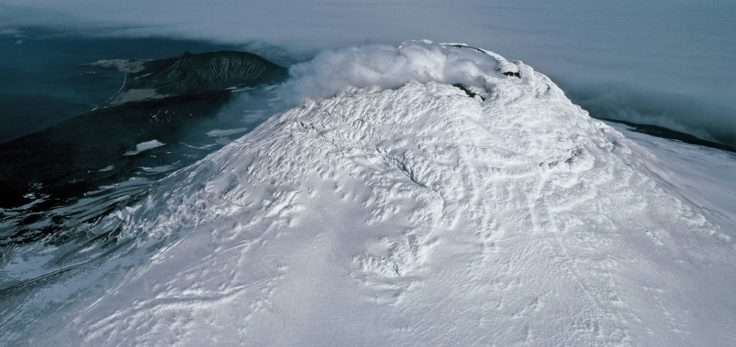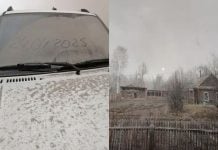An incredibly rare lake of lava has been discovered on Saunders Island in the South Sandwich Islands, one of the world’s most remote and volcanically active island ranges.
The incredibly rare lava lake of Mount Michael measures 90 and 215 meters (295 and 700 feet) in diameter and has temperatures soaring above 1,200°C (2,160°F). It joins just seven other known features of this nature on Earth.

“We are delighted to have discovered such a remarkable geological feature in the British Overseas Territory,” said study author and geologist Alex Burton-Johnson. “Identifying the lava lake has improved our understanding of the volcanic activity and hazard on this remote island, and tells us more about these rare features, and finally, it has helped us develop techniques to monitor volcanoes from space.”

Mount Michael stratovolcano
Satellite images from the 1990s showed “persistent thermal anomalies” that were not associated with magma overflowing from the crater, suggesting the existence of a lava lake.
Low-resolution satellite images taken in 2001 furthered evidence of its existence but could not confirm that the lake existed over a long period of time.
The remoteness and inaccessibility of the region made scientific validation all the more challenging.
Now, researchers with the British Antarctic Survey analyzed slightly higher resolution satellite images taken between 2003 and 2018 and, incorporating data dating as far back as 1989, have found that characteristics of the “amazing geological feature” on Saunders Island are consistent with other lava lakes throughout the world.
Mount Michael is an active basaltic stratovolcano residing among some of the world’s most active volcanoes. Regular eruptions have been recorded in the South Sandwich Islands over the last 200 years, but little is known about their activity.
Rare Lava Lakes
Lava lakes are different than molten lava triggered by an explosion and are often found within a volcanic crater whose subsurface circulating magma replenishes the lake. The activity can vary over minutes to decades and can take the form of a crusty surface or “violent lava fountains” exploding from the lake. Despite their seemingly dramatic flair, lava lakes are most often associated with less active volcanos.
Other lava lakes are found in the Democratic Republic of Congo, Ethiopia, Antarctica, Hawaii, and Nicaragua.
[Journal of Volcanology and Geothermal Research, BAS, IFLS]











